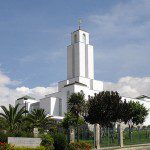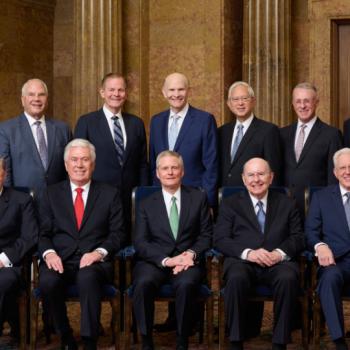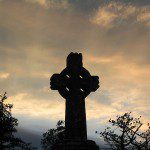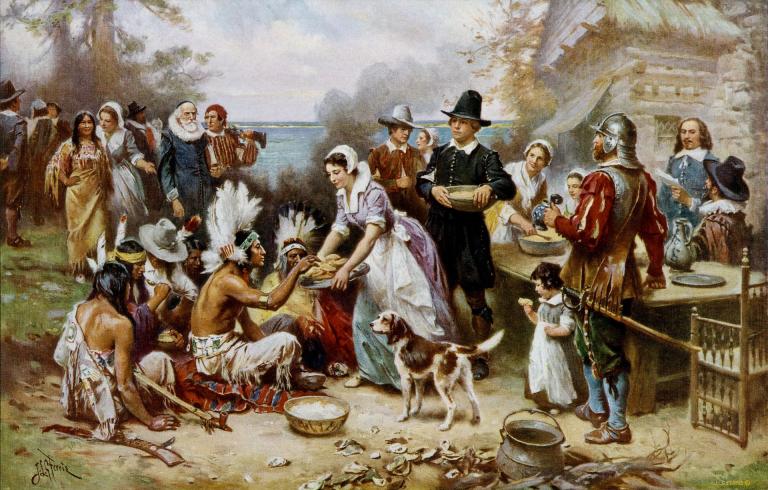
Wikimedia Commons public domain image
First, though, I need to announce three new items that have gone up on the website of the Interpreter Foundation:
Nibley Lectures: Time Vindicates the Prophets — Rhetoric and Revelation
Between 7 March 1954 and 17 October 1954, Hugh Nibley delivered a series of thirty weekly lectures on KSL Radio that were also published as pamphlets. The series, which was called “Time Vindicates the Prophets,” was given in answer to those who were challenging the right of members of the Church of Jesus Christ of Latter-day Saints to call themselves Christians.
This lecture is a discussion of rhetoric having the impression of knowledge with no actual knowledge. This is contrasted with revelation, which provides true knowledge.
The Interpreter Radio Roundtable for Come, Follow Me Old Testament Lesson 49, “His Ways Are Everlasting” on Nahum; Habakkuk; Zephaniah, was a very economical one, involving only one roundtable panelist: Martin Tanner. His discussion of the books of these three “minor prophets” of the Old Testament or Hebrew Bible has now been extracted from the 23 October 2022 broadcast of the Interpreter Radio Show for your enjoyment and edification. The complete two-hour show may be heard at https://interpreterfoundation.org/interpreter-radio-show-October-23-2022/. The Interpreter Radio Show can be heard live on Sunday evenings from 7 to 9 PM (MDT), on K-TALK, AM 1640, or you can listen live on the Internet at ktalkmedia.com.
Once again, Jonn Claybaugh compiles a brief set of helpful notes for student and teachers of the Church’s “Come, Follow Me” curriculum.
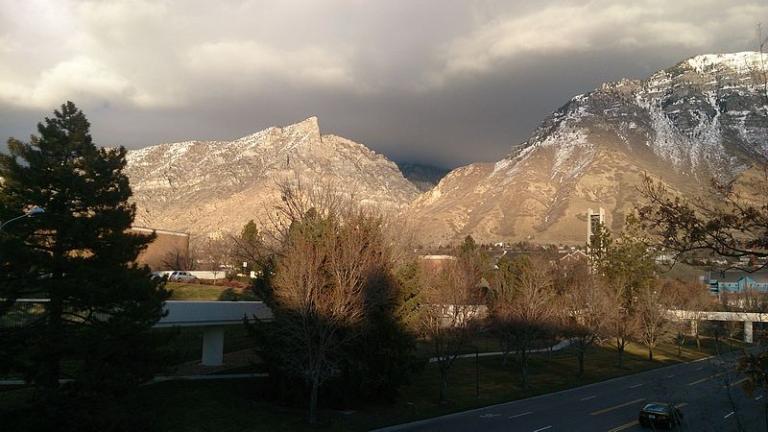
By now, you may be aware of the fact that Anderson Lee Aldrich, formerly known as Nicholas Brink, who assaulted Club Q in Colorado Springs a few days ago, is a member of the Church of Jesus Christ of Latter-day Saints.
When a certain small population of online critics of the Church that I enjoy watching learned of his membership, they were overjoyed. They immediately blamed President Dallin H. Oaks and Elder Jeffrey R. Holland and even the late Elder Neal A. Maxwell. (Please see my Meridian Magazine article “Elder Holland: What They Heard is Not What He Said.”) One expressed his hope that President Oaks is “proud” of his role in the Colorado Springs atrocity and salivated at the prospect of a lawsuit by survivors against President Oaks and the Church. The Brethren, others suggested, should finally stop their preaching of hate and fear.
I’m going to go out on a limb here, though: The evidence doesn’t seem to suggest that Anderson Lee Aldrich is the kind of person whose life is governed by his careful reading of the words of the apostles and prophets:
Newsweek: “Colorado Suspect Anderson Aldrich’s Links to Mormon Church Explained”
MSN: “Mormon church confirms the Colorado Springs shooter was a member”
“LDS officials condemn nightclub shooting, say suspect was not active in church”
“Details are coming to light about the alleged gunman who killed five people at an LGBTQ nightclub”
I wrote yesterday about the official statement issued by the Church of Jesus Christ of Latter-day Saints on the proposed federal Respect for Marriage Act. Here are a few further items that are relevant to the matter:
The first comes from Douglas Laycock, of the University of Virginia, who currently holds the titles there of “Class of 1963 Research Professor in honor of Graham C. Lilly and Peter W. Low,” “Robert E. Scott Distinguished Professor of Law,” and “Professor of Religious Studies.” The university website reports of him that “Douglas Laycock is perhaps the nation’s leading authority on the law of religious liberty and also on the law of remedies. He has taught and written about these topics for more than four decades at the University of Chicago, the University of Texas, the University of Michigan and now Virginia.” Here is an article that he wrote for the Deseret News: “Perspective: The Respect for Marriage Act shows that compromise is the way forward: The bill is a compromise, and like any good compromise, it leaves both sides less than entirely happy. But it also leaves both sides better off while protecting religious freedom”
He is quite right that some are “less than entirely happy” with the proposed bill. Here, for instance, is Chrissy Stroop, writing for Religion Dispatches: “Three Cheers for Mormon Support of Same-Sex Legislation? Not So Fast” Some of those who think that the Brethren are selling us out should perhaps be reassured by the fact that Ms. Stroop thinks that they haven’t gone far enough.
Once again, though, I share an essay from David French, who is always worth reading. This is a piece in The Atlantic: “Pluralism Has Life Left in It Yet: The Respect for Marriage Act, and the harmony between religious liberty and LGBTQ rights.” Of course, not everybody agrees. Consider this article in National Review: “David French Is Unduly Optimistic about Progressive Marriage Legislation”

Finally, I share something that I wrote for Thanksgiving 2010:
Most modern Americans are so far removed from farming—we get our milk from cartons, our meat neatly packaged at the grocery store, our grains in cereal boxes, our cranberries in cans—that we easily forget the agricultural roots of Thanksgiving Day. But Thanksgiving is a harvest festival, and similar celebrations of bounteous crops (always an uncertainty) have occurred for millennia in such places as Korea, India, Turkmenistan, Nigeria, China, Vietnam, Argentina, and Persia. The ancient Jewish feast of tabernacles, or “Sukkot,” was such an occasion. The settlers of Plymouth Plantation in the Massachusetts Bay Colony celebrated Thanksgiving in 1621, but harvest festivals had already occurred in Canada in 1578 and among Spanish explorers in Florida in 1565.
Our technology is so successful today, our supply lines so reliable, our supermarkets so well stocked, that we seldom consider our dependence upon vital things such as rain and temperate weather that are far beyond our control. Furthermore, we are all beneficiaries of laws we didn’t enact, moral principles we didn’t invent, minerals we didn’t mine, gasoline for which we didn’t drill, sacrifices of ancestors we’ve forgotten, languages we inherited painlessly as children, literature we didn’t write, roads we didn’t pave, art we didn’t create, cities we didn’t build, clothing we didn’t sew, sciences we don’t even understand.
But our dependence goes far deeper than that. We live on a privileged planet, tilted the right way, the right distance from the right kind of sun, at the right point in the right kind of galaxy. And we live in what some have called a “Goldilocks universe.” It, too, is just right.
If gravity were stronger or weaker by one part in ten to the fortieth power—that’s a one followed by forty zeros—life-sustaining stars like our sun could not exist.
If the “big bang” that created our universe had differed in strength by as little as one part in ten to the sixtieth power, it would have quickly collapsed back on itself or else expanded too rapidly for stars to form. In either case, life would be impossible. (This degree of accuracy can be compared to firing a bullet across the observable universe, twenty billion light years, and hitting a one-inch target.)
At the beginning, the ratio of matter to antimatter had to be accurate to one part in ten billion for the universe to arise.
If the strong nuclear force that binds protons and neutrons together in the atom were stronger or weaker by as little as five percent, life would be impossible.
If neutrons were not roughly 1.001 times the mass of protons, all protons would have decayed into neutrons or all neutrons would have decayed into protons. Life would not be possible.
When hydrogen is converted to helium, precisely 0.007 percent of its mass must be transformed into energy. If that value were lowered to 0.006, no transformation could take place; the universe would consist only of hydrogen. If the figure were 0.008, hydrogen would long since have been depleted and, among many other things, there would be no water.
It is, the great British physicist Sir Fred Hoyle once said, as if “a super-intellect has been monkeying with the laws of physics.”
“The fulness of the earth is yours,” says the Lord, “the beasts of the field and the fowls of the air, and that which climbeth upon the trees and walketh upon the earth; yea, and the herb, and the good things which come of the earth, whether for food or for raiment, or for houses, or for barns, or for orchards, or for gardens, or for vineyards; yea, all things which come of the earth, in the season thereof, are made for the benefit and the use of man, both to please the eye and to gladden the heart; yea, for food and for raiment, for taste and for smell, to strengthen the body and to enliven the soul. And it pleaseth God that he hath given all these things unto man; for unto this end were they made to be used . . . And in nothing doth man offend God, or against none is his wrath kindled, save those who confess not his hand in all things, and obey not his commandments” (Doctrine and Covenants 59:16-21).
This Thanksgiving, let us remember the Person to whom we owe true thanks.





